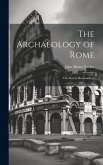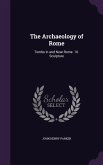The conservation of a portion of a historic building must take into account of the preservation of the elements that characterize it, starting from the decorative cements in the facade to get to the structure itself, which in this case is masonry. The architect effort is to get in tune with the environment in which operates, without re-proposing models tested elsewhere and not suited to that material and that type. First of all, the urban context is taken into account, as well as constraints and in this case the historical-artistic constraint that insists on facades and the scale body. A special attention was paid to the folio vaults,that by their nature couldn't endured invasive and too rigid interventions and on the preservation of ochre dyeing, witness to the passage of time in choices, from architects such as Giovannoni and Limongelli young who pledged to give back to our future the modern city with the same dignity as the ancienty, Roman and papal.
Bitte wählen Sie Ihr Anliegen aus.
Rechnungen
Retourenschein anfordern
Bestellstatus
Storno








